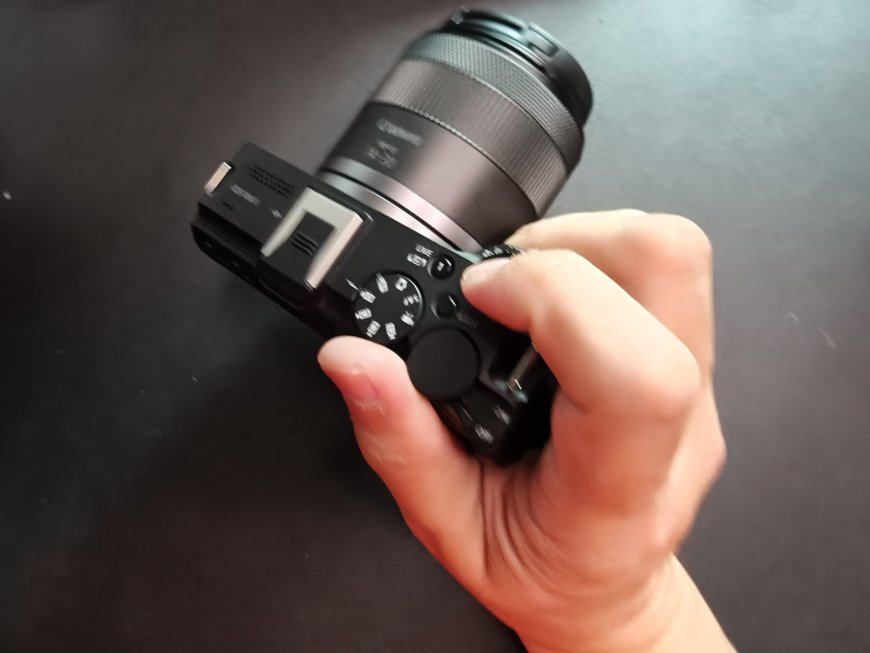Canon EOS R50 V Review: A Compact Mirrorless Camera Tailored for Vloggers
The Canon EOS R50 V is a user-friendly compact mirrorless camera designed for vloggers who need a portable option with strong video capabilities. With features like a 24.2-megapixel sensor, Dual Pixel CMOS AF II, and uncropped 4K recording, this camera offers solid performance in a small package. While it may lack some advanced manual controls, it's a great choice for beginners or those looking to upgrade from their smartphones.

If you’re looking for an easy-to-use compact mirrorless camera that also does well with videography on the road, the Canon EOS R50 V is targeted right at you.
The APS-C mirrorless camera is built around Canon’s RF mount for replacing lens and offers a blend of beginner-friendly ease with capable imaging features.
It packs in a 24.2-megapixel APS-C CMOS sensor, paired with Canon’s DIGIC X processor. Together, they deliver sharp images with excellent colour science and solid low-light performance for its class.
Notably, Canon has stripped away the electronic viewfinder and built‑in flash to make a flatter, lighter frame which helps when bag space is at a premium during your travels.
The Japanese imaging giant has also replaced the higher-resolution 1.62-million-dot screen on the EOS R50 with a 1.04-million-dot articulating touchscreen tailored for vloggers. It’s a definite downgrade but I suspect most users will not notice.
That compact redesign allows the EOS R50 V to offer dual recording buttons, with one of the buttons located on the bottom right of the camera’s front, which is useful when vlogging. Unique to this camera is also a side tripod screw for efficient vertical video mounting, allowing you to record videos for TikTok and Instagram Reels.
Despite its small size, my fairly large Asian hands still feel comfortable holding it.
The good news is that the new Canon camera’s autofocus system is borrowed from higher-end models. It features Dual Pixel CMOS AF II, which enables accurate tracking of eyes, faces, animals, and vehicles.
During my tests, I can tell that autofocus is fast and dependable, even in challenging lighting. Eye tracking follows a subject without fail, even when an obstacle passes between the subject and the camera.
Video capabilities are a strong suit for a camera in this range. The EOS R50 V records uncropped 4K at up to 30 frames per second using the full sensor width or cropped 4K at 60 frames per second.
It also shoots 1080p videos at up to 120 frames per second (fps) for slow-motion capture. There is only digital image stabilisation on the camera body so you might have to spend a bit more on lenses with optical stabilisation can help reduce shake if it’s important.
The camera is definitely video-centric with a front-facing record button that makes it easy to start recording.
The new Canon camera is an easy camera to use for live streaming.
The standard HDMI port is preferred but to keep the camera small, Canon has used micro HDMI instead.
Audio input and monitoring come standard.
Having a tripod screw for vertical orientation is handy for shooting TikTok and Instagram Reel video.
The EOS R50 V is clearly focused on video when you find shooting modes for video. Plus, there are options to use the camera as a streaming camera, either by plugging in to a PC or other device via a USB or HDMI port.
I like it that Canon allows multiple custom settings to be assigned and quickly accessed via the mode dial. However, switching between the standard photography modes still requires digging into the menu, which slows things down a bit.
The Canon EOS R50 V offers both a microphone input and a headphone jack, enabling real-time audio monitoring during shoots. Another standout feature is the real-time LUT (Look-Up Table) preview, which lets you see filter effects live while recording. I usually choose to disable this as I prefer applying filters during post-production.
In terms of handling, the camera is light and small, making it ideal for vlogging or travel. Do note, though, that the grip is modest, so larger hands might find it a bit cramped. Of course, you can fix on a small tripod that acts a handle that helps with holding the camera for video.
On the plus side, the fully articulating touchscreen is bright and responsive. It’s perfect for self-shooting or navigating menus without fuss and faces forward when shooting vlogs.
The EOS R50 V features a single UHS-I SD card slot, so obtaining more reliable SD cards, like Sony’s Tough SD cards, is smart insurance against corrupted image files.
The camera’s battery life is decent, but you will likely want a spare for your travels. The battery can be charged like a smartphone by plugging your charger into the camera via the USB-C port.
The EOS R50 V packs a lot into a portable camera body that is easy to pick up and start using right away. By that I mean Canon’s colour science that is a bit warmer or reddish on certain skin tones, its smart autofocus, and solid video capabilities that will be handy.
You can buy the S$899 body or pay S$1,199 for a combo that comes with a 14-30mm f4-6.3 kit lens. At these prices, this is an attractive camera for folks getting into photography and want something better than their phones.
However, more advanced users might wish for some extra manual controls and a sturdier build. You’d find that on costlier models such as the Canon EOS R7 (S$1,899 for body alone) or even the Canon EOS R6 II (S$2,699 for body alone), which comes with a full-frame sensor and access to a larger range of lenses.
According to the source: Techgoondu.
What's Your Reaction?
 Like
0
Like
0
 Dislike
0
Dislike
0
 Love
0
Love
0
 Funny
0
Funny
0
 Angry
0
Angry
0
 Sad
0
Sad
0
 Wow
0
Wow
0















































































































































































